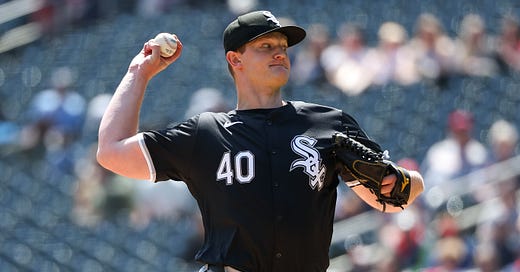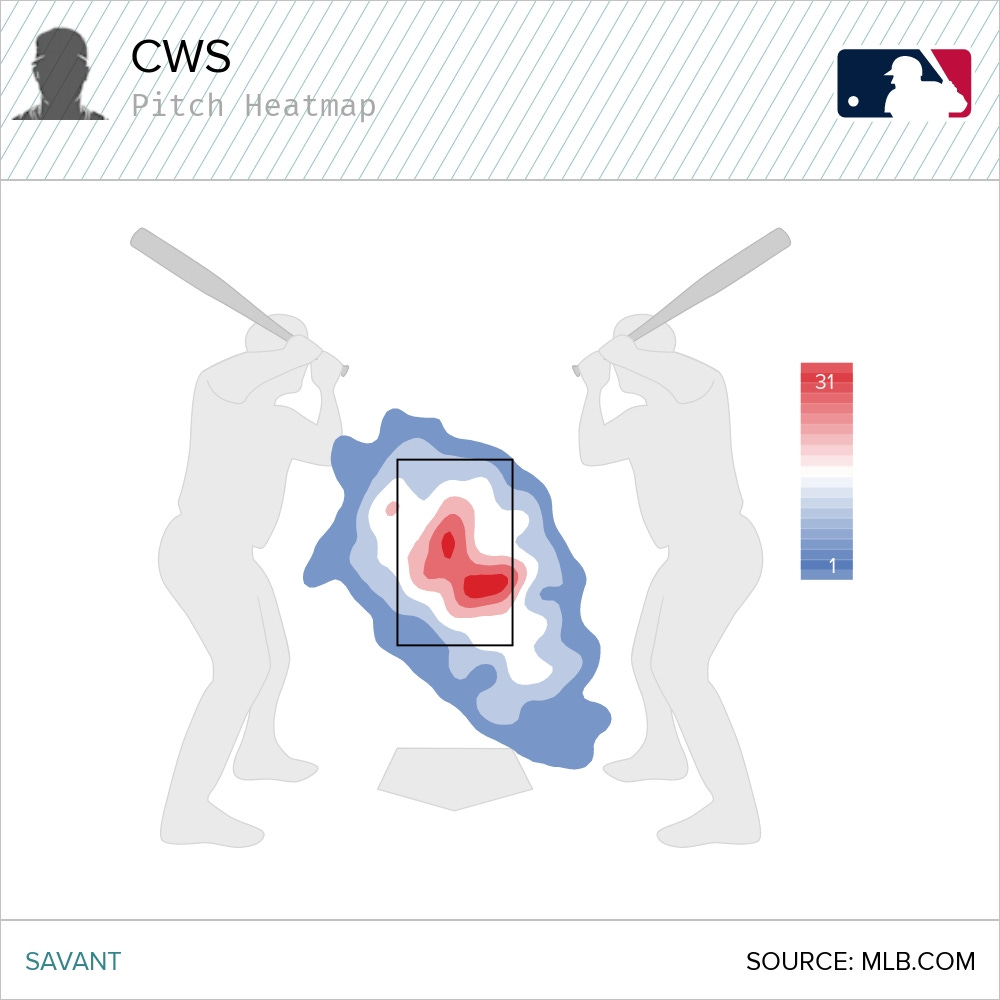Here's why the Atlanta Braves need to bring back Michael Soroka
The Braves had their reasons for moving on from the stocky Canadian last offseason, but signing him in free agency would be a smart move
Professional baseball is a business and players come and go all the time. That’s what you sign up for, both as a player and a fan.
Despite that knowledge, it still sometimes hurts. Dansby Swanson leaving Atlanta obviously wasn’t easy for him - he was a self-professed “Atlanta lifer”, a local kid who won a championship playing for his hometown team. Freedie Freeman’s negotiations to either return to the Braves or depart for the Los Angeles Dodgers in free agency went so well that he ended up firing his agent.
I’m putting Michael Soroka in with those guys.
Drafted by the Braves out of his Canadian high school in 2015’s first round, Soroka initially looked like he could have been one of his generation’s top pitchers. After a five game major league cameo in 2018, he was the first non-Julio Teheran pitcher to get an Opening Day start for Atlanta in seven years and dominated all year. Soroka’s 2019 season saw him go 13-4 with a 2.68 ERA, earning an All Star selection, a Rookie of the Year runner-up to New York Mets slugger Pete Alsonso (FOOTNOTE: We need separate pitcher and position player awards for rookie of the year), and finishing 6th place in the NL Cy Young voting.
And then injuries struck.
Just three games and thirteen innings into his 2020 season, Soroka tore his Achilles coming off the mound to field a ground ball. He would later require a clean-up surgery on that same Achilles the next May, as his body rejected the sutures from the initial August repair. Finally getting the Achilles boot off in June, Soroka was walking into the clubhouse and reportedly felt a “pop”, later confirmed to be a complete re-tear of that same Achilles.
His rehab finally got going in August of 2022, with Soroka making six combined starts between High-A Rome and Triple-A Gwinnett. But after the minor league season ended, a bout of shoulder soreness kept him from joining the major league roster. The start to his 2023 was delayed by hamstring tightness, while the end of the season was cut short due to right forearm inflammation.
Between his time spent on the injured list in 2023, the results just weren’t there - a 6.40 major league ERA with nine homers allowed in 32.1 innings, a 2.5 HR/9 rate worse than last season’s league leaders in homers allowed.1 He fared better in Gwinnett, putting up a 3.41 ERA across seventeen starts, including two seven-inning complete games (one of which was a shutout).
Entering last winter, faced with a projected arbitration salary of $3M and the inability to option Soroka down to the minors if he struggled, the Braves packaged him with four other players in a deal with the Chicago White Sox for reliever Aaron Bummer.
What went wrong for Soroka with the White Sox?
Initially making the rotation as the #2 starter behind Garrett Crochet, Soroka’s starts were a disaster. The righthander went 0-5 with a 6.39 ERA in his nine starts for Chicago, allowing nineteen extra-base hits (including ten homers) and sporting a walk rate of 12% that was roughly even with his strikeout rate (also 12%).
The issue? He was too in the zone - his most common pitch location was in the absolute heart of the zone, which we all know is likely to get crushed - and at the worst possible times.
Of the 746 pitches he threw as a starter last season, 188 of them (13%) were in the heart of the zone and opponents hit .342 with 11 extra-base hits (including five homers) off of them.
Additionally, a lot of those middle-middle pitches were in obvious situations where you’d throw a middle-middle pitch - 18% of all of Soroka’s pitches in the heart of the plate were on 2-0 counts, and opposing batters slugged 2.250 off of Soroka in that specific situation.
Because he was throwing so many balls early in the count, he ran into trouble when he HAD to come into the zone. And let’s be clear, getting behind early was the issue here - when Soroka went to the heart of the plate when up 0-1 or 0-2, which he did 25 times, he allowed only a single.
So, after moving to the bullpen on May 18th, what did Soroka do differently?
Throwing better pitches harder
As a starter, Soroka was pacing himself - the expectation is more innings than you’d cover as a reliever, naturally, so you need to find a way to expend less energy per pitch. Not throwing as hard is one way to pace yourself, and Soroka did that - his average fastball velocity was barely over 92mph as a starter and jumped to 94 as a reliever.
But another way is to pare down your arsenal, and Soroka’s efforts to do that led him to largely eliminate a pitch: His sinker.
That sinker had always been one of his best pitches, and in his breakout season, it was - it came out to a +13 Run Value despite being thrown 1,140 times. The ability to consistently pick up weak ground ball contact powered that 2019 season for Soroka.
This sinker is not that sinker.
Soroka’s sinker this season moved significantly less than in 2019, losing more than two inches in vertical drop and going from +1.2 inches in induced vertical break to -1.5 inches in IVB.
And the results bore that lack of movement out. Despite similar batting averages allowed - .290 in 2019 and .289 in 2024 - his slugging went up by over 100 points on the pitch this season and the home runs followed. After allowing only 16 extra-base hits on 281 batted balls off the sinker in 2019, Soroka allowed 10 in just 74 batted ball events this season.
In the bullpen, Soroka threw the sinker less than he had since resuming his career and, coincidentally2 had the best results he’s had since that breakout 2019 season. As this incredibly comprehensive piece from Mike Petriello of MLB.com discusses, he completely stopped throwing it after returning from the injury.
Can he make it back as a starter?
That Petriello piece, which is exceptional, focuses mostly on if Soroka can be that good in someone’s bullpen again or if the success he had down the stretch was a fluke.3
Atlanta needs relievers and Soroka’s performance bears a look to see if he can join the Braves bullpen.
But I want to look at something else: Can he make it back to the rotation?
And I think he can.
The first requirement is some of those velo gains from relieving need to carry over to starting. As quoted by Petriello, Soroka actually talked about improvong his velo in the pen:
"So, right now, it's just every pitch as hard as I can. It's kind of fun pitching out of the bullpen and getting that huge surge of adrenaline and making use of it. Velo ticks up a little bit. You don't quite get that as a starter, because you're thinking about going deep. I think I could probably learn just being in the bullpen for a bit."
This strategy worked for Grant Holmes - the Braves used him in relief in Gwinnett and a lot of those velo gains carried over to when he started.4 You can see how that could work for Soroka as well.
But the other part of this is the Braves finding a third pitch, because in Soroka’s three post-injury apperances, he threw exactly one pitch that wasn’t a fastball or a slider (a lone changeup).
Maybe this is fixing the sinker, and that’s the part where I have some pause - there’s just not a lot of examples of the Braves noticeably tweaking or improving a player’s sinker, because they’re a 4S org over a sinker org.5
Maybe this is adding another pitch, although he already has the usual suspects of a slider and a four-seam fastball. In that similar situation, as a 4S/slider guy with a poor changeup, Spencer Strider added a curveball. Maybe that’s the move?
Just to clarify: I’m fine with bringing back Michael Soroka back as a reliever. But unlike some (people that always seem to show up in my mentions whenever I talk about this), I’m almost always in favor of trying to convert relievers to starters in an effort to find value. The cost between a reliever contract and a starter contract is significant, and the value of even an average starter is usually higher than all but the absolute best relievers in the game - championships rosters are built on that delta.
So yeah, bring him in as a reliever and spend the winter/spring working on his surrounding arsenal. Because not only would it be a good story, but it’d also be a good way to improve the roster next season and beyond.
Lance Lynn led baseball with 44 in 183.2 innings, a 2.2 HR/9 rate, while Lucas Giolito led the AL after allowing 41 in 184.1 innings, a 2.0 HR/9 rate
Not coincidentally.
SPOILER ALERT: Petriello doesn’t think it’s a fluke.
As well as when Atlnata gave him a slider, which Oakland somehow never tried to do (!!!) despite the fact that’s the #1 go-to for any right-hander that doesn’t throw one.
On the flipside, Spencer Schwellenbach added one during the season and there’s almost no way he does that without the Braves coaching staff being involved somewhat, right?





Can’t disagree here. Good writeup. A heavy-incentive laden deal with a minimal base makes sense
This is a great read. My heart swells with hope. Getting Mike (sorry Michael) back would be really cool.